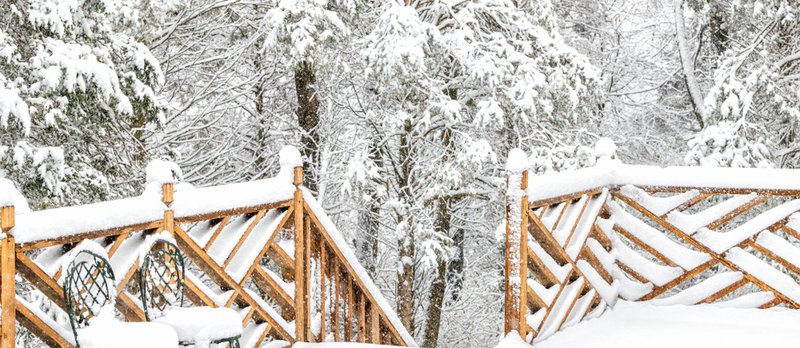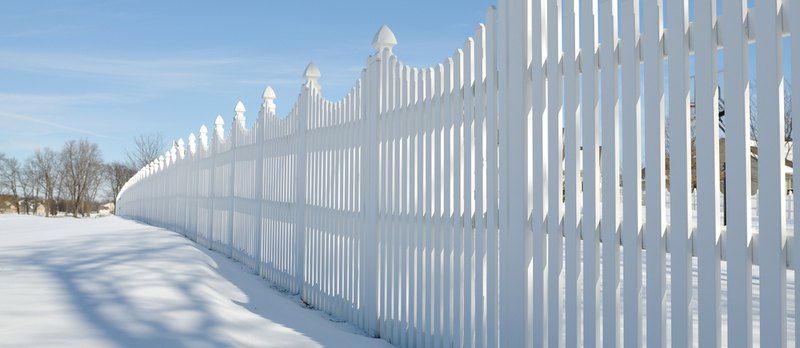If you have newly installed wooden fences and decks by a local lumber company, because of their beauty and cost-effectiveness, you have to protect them from harsh weather conditions. Be it autumn or winter, every weather plays a toll on wooden material. To protect wood from weather and avoid costly repairs, you can do a few things.
Outdoor wood furniture is constantly exposed to variations in temperature, and unlike other materials, wood is highly reactive to it. Humidity, rain, sunlight, snow, and more affect wood furniture differently. So, how to protect outdoor wood furniture? You can do that in several ways, for instance, through staining, painting, sealing, waterproofing, and weatherizing. lumber company
This article will discuss how to weatherize wood and protect it from different weather, especially winter. But before we get started, let’s discuss how snow affects wood and why.
How Snow Affects Wood And Why?

If you live in an area that doesn’t experience rapid weather fluctuations from hot to cold, you don’t need to worry about protecting deck wood or other furniture. But if your area experiences extreme weather variations, you must learn how to protect wood from weather.
It is common knowledge that wood expands and contracts due to temperature, but that’s false. After extensive research, we found that although temperature plays a significant role, moisture affects outdoor wood.
Like other materials, wood expands when heated and shrinks when cooled. Wood is highly porous and absorbs moisture beneath its surface. The fluctuating weather quickens the expansion and contraction cycle, causing the wood to weaken and form cracks. This can lower your outside wood deck and furniture lifespan and lead to costly repairs.
How To Protect Wood From Weather: 5 Tips
There are some ways of protecting deck wood:
Pressure Wash
The best way to protect wood outside is to pressure wash it. Many people commonly employ this technique when their wood deck is affected by the weather conditions. Generally, we recommend you hire professionals to do this job. You can also do it yourself but remember to use the proper cleaning agents, nozzle, and pressure rating. For instance, start at a low-pressure rating and don’t hold the nozzle too close to the wood.
Moreover, the type of wood also determines if pressure washing is the right option, as softwood fibers get splintered if wet, whereas processed wood cleans easily without damage.
Cracks Seal
How to protect outside wood? Seal the cracks. If your wooden fence, deck, and trim already has cracks and splinters, you can still save them from further damage. By sealing the cracks and gaps, you can keep the moisture out and ensure your wood furniture remains protected.
You can use a wood-tone putty for small cracks, and for large cracks, you can use wood fillers or wood plastics. Follow the steps below for detailed instructions:
- Prepare the damaged area by cleaning the crack and removing jagged ends using a craft knife.
- Then, use a caulking gun to apply wood filler or putty, depending on the crack size.
- Fill all the gaps, let the material dry, and then apply paint, stain, and sealant.
Paint And Waterproof

Another way to protect wood from weather is to paint and waterproof it. Bare wood is highly reactive to the elements and doesn’t stand a chance against harsh weather conditions, especially in winter. You can increase its lifespan by applying some sort of protective layer on wood, such as paint, stain, or sealant.
Among the three, stains and sealants are the better options. They penetrate the pores of the wooden surface and make it water-repellant. On the other hand, paint provides a thicker coating, but it only protects the surface, and moisture can easily get trapped inside.
Remove Snow
You can also protect wood from weather by removing snow from it. Even if you apply a stain or sealant, you still need to regularly remove snow from your outside wood furniture to ensure it doesn’t absorb moisture. Experts recommend removing nearby branches and fallen leaves because they also build moisture.
Nearby branches hold snow, and when the temperature fluctuates, the ice melts and drops on the wooden fence, which can cause cracks and splinters to appear.
Prevent Mold
In winter, wood absorbs excess moisture from nearby branches, fallen leaves, and foliage. And since there is no sun to dry the excess moisture, it builds up in the wooden fence or deck, leading to mildew, rot, and mold growing on the wood and decreasing its structural integrity and aesthetic. You can prevent mold on wood in many ways, such as by applying a wood sealant and clearing up any standing water nearby.
How to protect wood from weather if your wood already has mold growing? Don’t worry; you can also salvage it. You can use mixtures of detergents or dishwashing soap with warm water and spray the affected area. Let the solution sit for an hour, then wipe it with a damp and dry cloth.
Protecting Deck Wood Is Not Easy; Need Help?
Wood is a soft material, and while you can perform all the methods mentioned above, it's best to have an expert by your side. Cedar Supply is a trusted lumber company that offers top-quality services. We can provide you with a list of professional Fort Collins installation contractors throughout northern Colorado and help you make smart decisions.
If you need help protecting deck wood on your property, call now for a quote.

